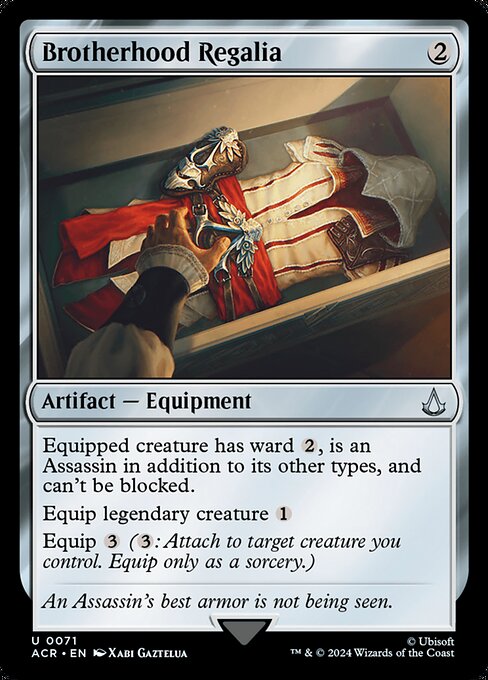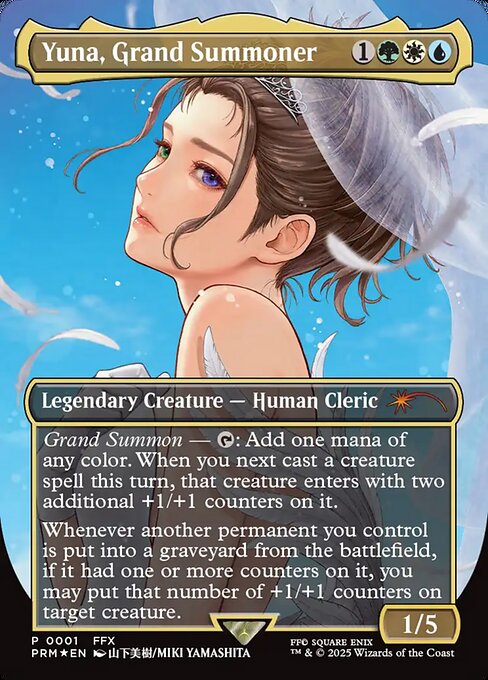Deck & Commander Strategies

Y'shtola, Night's Blessed
Control deck that uses non-creature spells with high mana value to deal damage to opponents while gaining life and drawing cards. Key win condition involves casting multiple spells per turn to trigger commander damage repeatedly.

Terra, Herald of Hope
Graveyard-focused deck that mills cards to gain flying and reanimates creatures with power three or less from the graveyard to the battlefield tapped, enabling multiple combat phases to overwhelm opponents.

Yuna, Grand Summoner
Counter and +1/+1 synergy deck that adds counters to creatures when they enter the battlefield and redistributes counters when permanents with counters die, aiming to build large creatures and maintain board presence.

Cloud, Ex-SOLDIER
Voltron equipment deck that equips Cloud with multiple equipment to increase power, generate treasure tokens for ramp, and draw cards when attacking with equipped creatures, aiming to overwhelm opponents with high damage output.
Gameplay Insights
- 1
CGB’s control deck relies heavily on casting multiple high-cost non-creature spells to maximize damage triggers and card draw from Y'shtola's abilities.
- 2
Ash’s use of a backup commander that enhances graveyard reanimation allows for powerful token and creature growth synergies, enabling multiple combat phases.
- 3
Talia’s strategy benefits from creatures entering with counters and the redistribution of counters upon permanent deaths, creating a resilient board state that can quickly escalate.
- 4
Cimo’s Voltron approach with Cloud focuses on equipping multiple artifacts to increase damage output, with card draw on attack helping to maintain momentum and resource advantage.
- 5
Early land and artifact plays were carefully managed to ensure smooth mana development and timely activation of key commander abilities, setting the stage for mid-game power plays.
Notable Cards
-

Brotherhood Regalia
Gameplay Summary
The game features a four-player Commander match with each player piloting decks themed around the Final Fantasy set.
Early turns focused on ramping and setting up board presence with each player establishing their game plan: CGB running a control-style deck centered around Y'shtola, Night's Blessed, aiming to leverage damage triggers and card draw; Ash playing Terra, Herald of Hope, emphasizing graveyard recursion and multiple combat phases to overwhelm opponents; Talia piloting Yuna, Grand Summoner, which focuses on counter synergies to build large creatures and maintain board control; and Cimo with Cloud, Ex-SOLDIER, seeking to Voltron up with equipment to generate card advantage and treasure tokens for ramp.
Initial board development involved artifact and land plays, with each player progressively activating their commander’s abilities and setting up graveyards or counters for future turns. A pivotal moment occurred when Ash cast a key backup commander to augment graveyard interactions, enhancing the reanimation potential of their deck, while CGB prepared for a potential spellstorm combo to maximize commander damage triggers.
Cimo’s strategy of equipping Cloud with multiple equipment and drawing cards was poised for a strong mid-game power spike.
Talia’s counter strategy aimed to grow creatures exponentially, threatening a win via overwhelming board presence.
Although the game was still in its early phase, the players had clearly defined paths to victory: control and burn-through spells for CGB, graveyard recursion for Ash, counters and big creatures for Talia, and Voltron equipment synergy for Cimo.





































